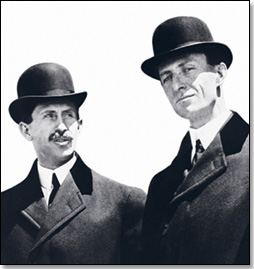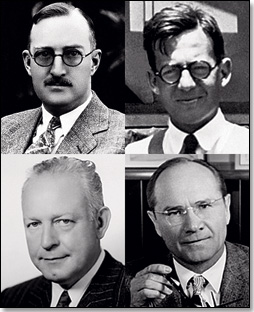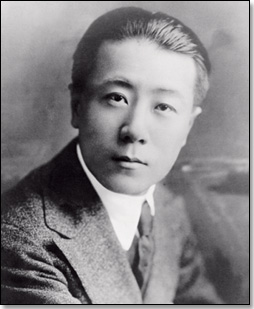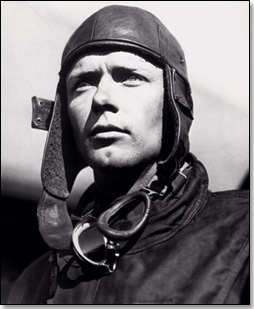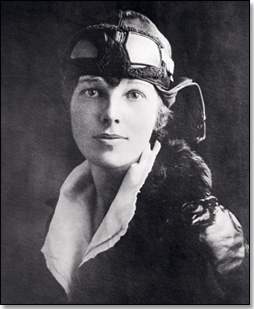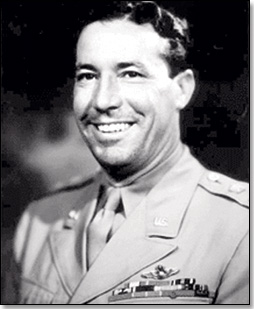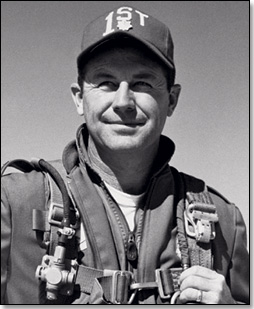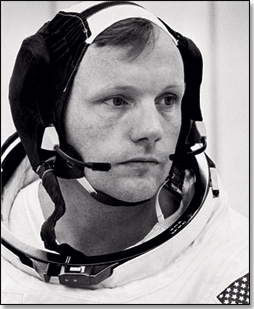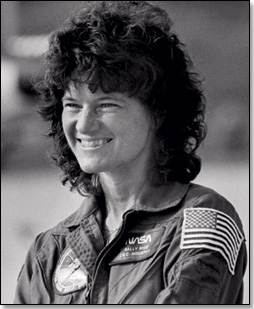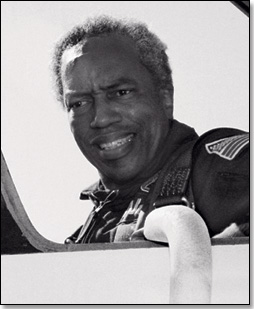| |
1900 |
|
1903
Orville and Wilbur Wright complete the first powered, controlled
flight at Kitty Hawk, North Carolina. |
|
|
| |
|
|
1907
Paul Cornu, a French inventor, makes the first helicopter flight,
hovering 1 foot above the ground for 20 seconds. |
|
|
| |
|
1908
Madame Therese Peltier is the first woman to fly solo in an airplane. |
| |
|
|
| |
1910 |
|
1911
Harriet Quimby becomes the first American woman to receive a Fédération
Aéronautic Internationale (FAI) pilot’s license. |
|
|
| |
|
|
|
|
1916
William Boeing incorporates Pacific Aero Products Company, later
known as Boeing Airplane Company. |
| |
|
|
1918
The U.S. Post Office begins airmail service from the Polo Grounds
in Washington, D.C. |
|
|
| |
|
1919
The first sustained international commercial passenger air service
is started between Paris and Brussels. |
1920
Donald Douglas and financier David R. Davis form Davis Douglas
Company. |
1920 |
|
| |
|
1921
Bessie Coleman becomes the first African- American woman to receive
a Fédération Aéronautic Internationale (FAI) pilot’s license. |
| |
|
|
1924
Two Douglas World Cruisers from the U.S. Army Air Service complete
the first aroundthe- world flight. |
|
|
| |
|
|
| |
|
1926
Robert Goddard launches the world’s first liquid propellant rocket. |
1927
Charles Lindbergh makes the first solo transatlantic nonstop flight
in the Spirit of St. Louis, a modified Ryan M-2 monoplane. |
|
|
| |
|
|
| |
|
1929
Lt. James H. Doolittle becomes the first pilot to fly completely
guided by instruments and radio from takeoff to landing. |
1930
Amy Johnson is the first woman to fly solo between England and
Australia. |
1930 |
|
| |
|
|
| |
|
1933
Wiley Post makes the first solo around-the-world flight in Winnie
Mae, his Lockheed Vega. |
1934
North American Aviation, Inc., is reorganized under the
leadership of Dutch Kindelberger. |
|
|
| |
|
1935
Douglas Aircraft Company introduces the DC-3, the first successful
passenger airliner; Boeing introduces the B-17 Flying Fortress
four-engine bomber. |
| |
|
|
1939
James McDonnell incorporates McDonnell Aircraft Corp. |
|
|
| |
1940 |
1940
The Boeing Stratoliner, the first airliner with a pressurized
cabin, makes its first flight. |
1941
Igor I. Sikorsky sets a national helicopter record by hovering
for 1 hour 5 minutes. |
|
|
| |
|
1942
Five aviation cadets earn their wings at Tuskegee Army Air Field
and become the nation’s first black military pilots. Among these
graduates is Benjamin O. Davis, Jr., later the first African-American
brigadier general in the U.S. Air Force. |
1943
Boeing begins production of the B-29 Superfortress bomber. |
|
|
| |
|
|
| |
|
1947
Air Force Capt. Chuck Yeager breaks the sound barrier in a Bell
X-1 test aircraft launched from the bomb bay of a Boeing B-29. |
| |
1950 |
|
| |
|
|
1953
Jacqueline Cochran is the first woman to pilot an aircraft supersonically
in a North American F-86 Sabre Jet. |
|
|
| |
|
1954
Boeing introduces the 707, the first successful passenger jet. |
| |
|
|
1957
The Soviet Union launches Sputnik 1, the first Earth-orbiting
satellite. |
|
|
| |
|
1958
The U.S. Federal Aviation Administration (FAA) is established
under the leadership of retired Air Force General Elwood R. Quesada. |
| |
|
|
| |
1960 |
|
1961
Maj. Yuri Gagarin of the Soviet Union becomes the first human
being to travel in space, completing one full orbit of Earth aboard
Vostok 1. |
|
|
| |
|
1962
John Glenn becomes the first American to orbit Earth. |
1963
Soviet cosmonaut Valentina Tereshkova becomes the first woman
in space. |
|
|
| |
|
|
1967
North American X-15 jet-powered experimental aircraft sets speed
record of more than 4,534 miles per hour. |
|
1967
McDonnell and Douglas merge into McDonnell Douglas Corp. |
1968
Astronauts aboard Apollo 8 become the first human beings to orbit
the Moon. |
|
|
| |
|
1969
Apollo 11 astronaut Neil Armstrong is the first person to set
foot on the Moon. |
| |
1970 |
|
| |
|
1971
The Soviet Union launches Salyut 1, the world’s first space station. |
| |
|
|
1973
United States launches Skylab, the first U.S. space station. |
|
|
| |
|
|
| |
|
1977
North American Rockwell space shuttle completes its first landing. |
1978
McDonnell Douglas F/A-18 Hornet fighter jet makes its first flight;
the Double Eagle II completes the first successful hot-air balloon
flight across the Atlantic.
|
|
|
| |
|
|
| |
1980 |
|
| |
|
1981
Space Shuttle Columbia makes the first shuttle test flight. |
| |
|
|
1983
Sally Ride becomes the first U.S. woman in space; Guion Bluford
becomes the first African-American in space. |
|
|
| |
|
|
| |
|
1986
Jeana Yeager and Dick Rutan make the first nonstop flight around
the world without refueling in their specially designed aircraft,
Voyager. |
| |
|
|
| |
1990 |
1990
Space Shuttle Discovery deploys the Hubble Space Telescope. |
| |
|
|
1994
The 777, the first airplane to be designed entirely on a computer,
makes its first flight. |
|
|
| |
|
1995
The Global Positioning System becomes fully operational. |
1996
Boeing acquires the defense and space units of Rockwell International
(the former North American Aviation). |
|
|
| |
|
1997
Boeing and McDonnell Douglas merge. |
| |
|
|
1999
Eileen Collins, on Space Shuttle Columbia, becomes the first woman
commander on a U.S. space mission. |
|
|
| |
2000 |
|
| |
|
2002
Boeing announces plans to develop the 7E7 Dreamliner.
|
| |
|
|

